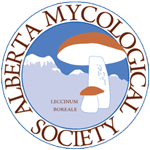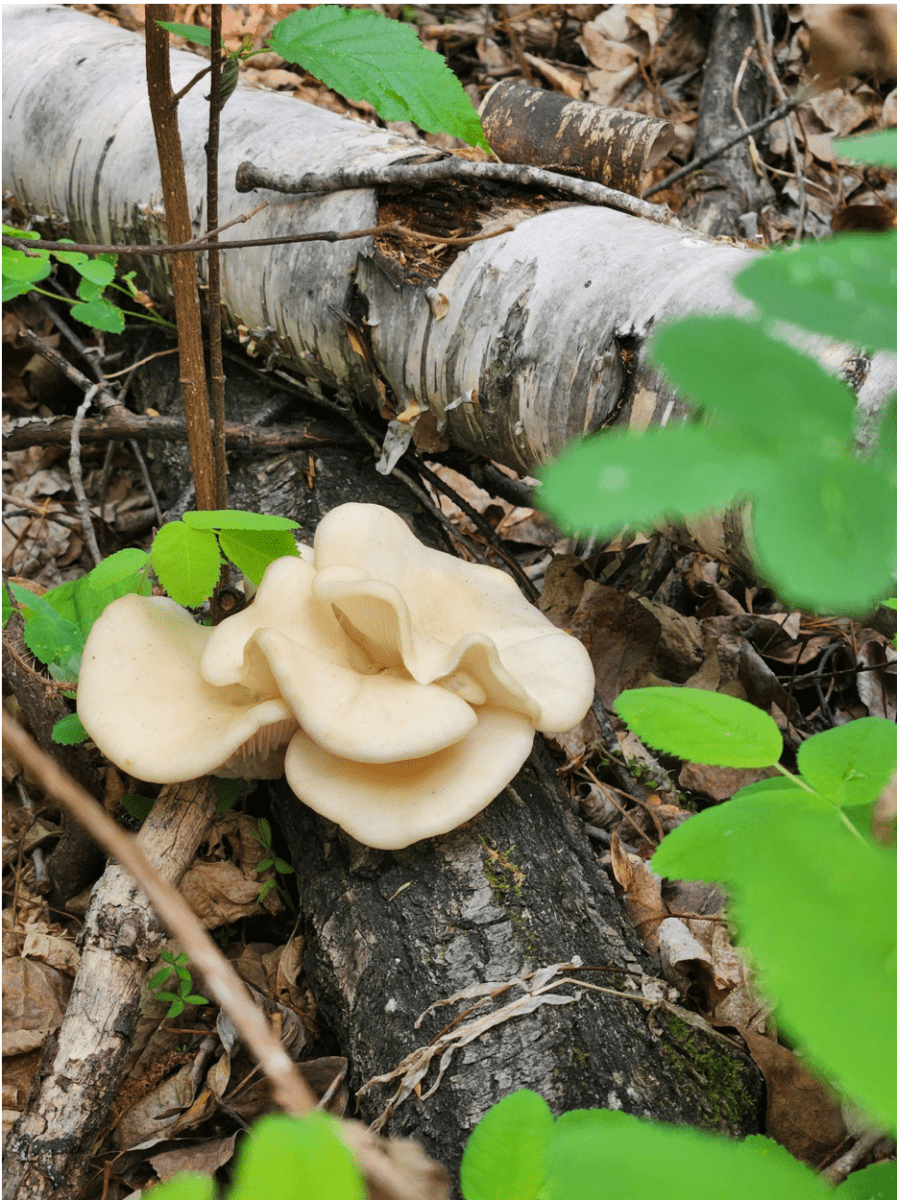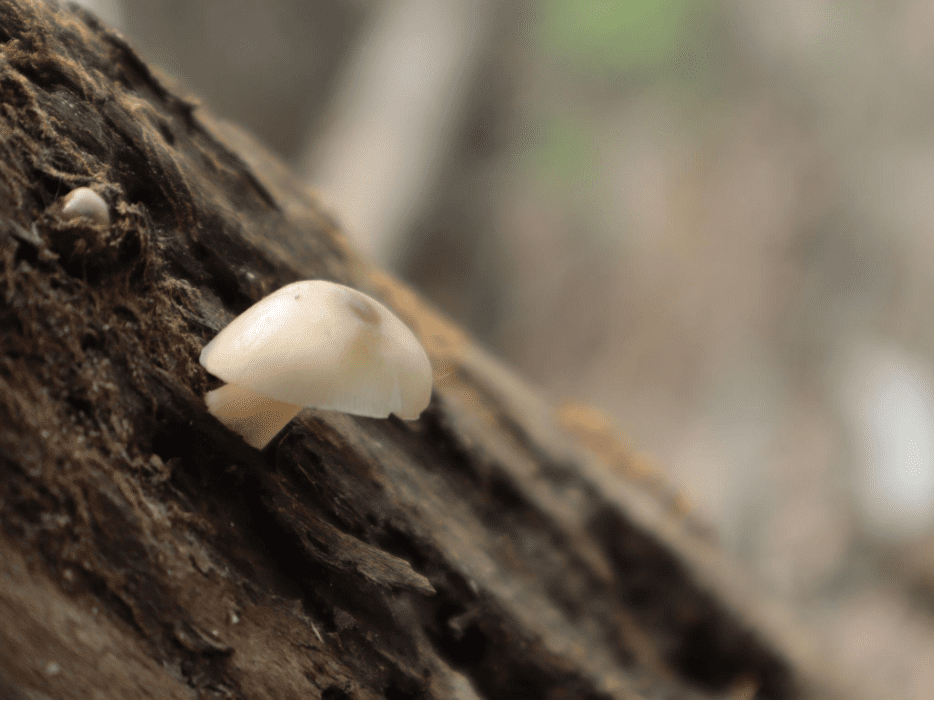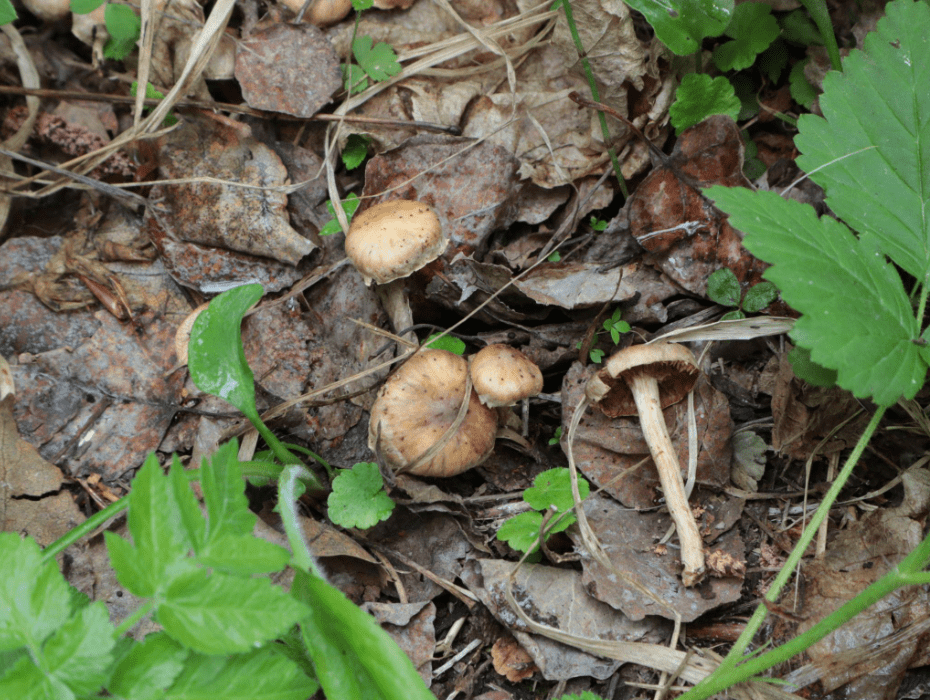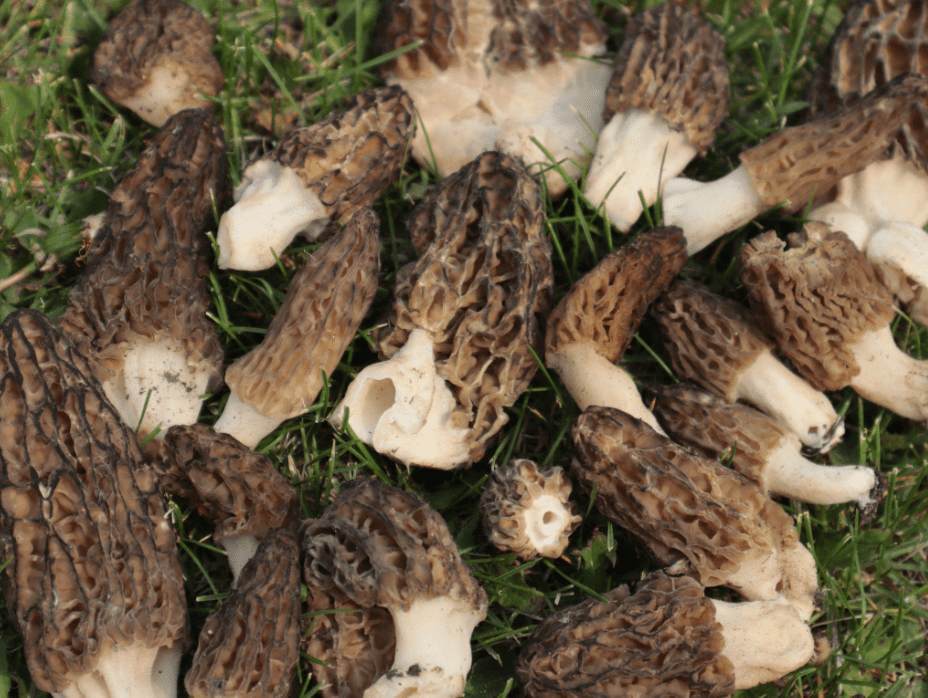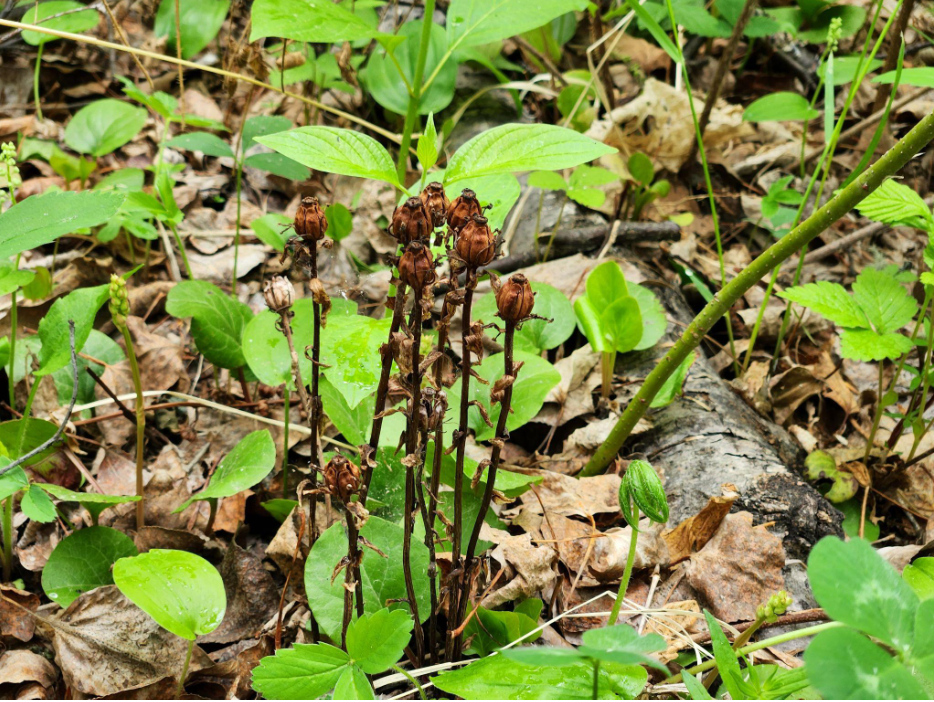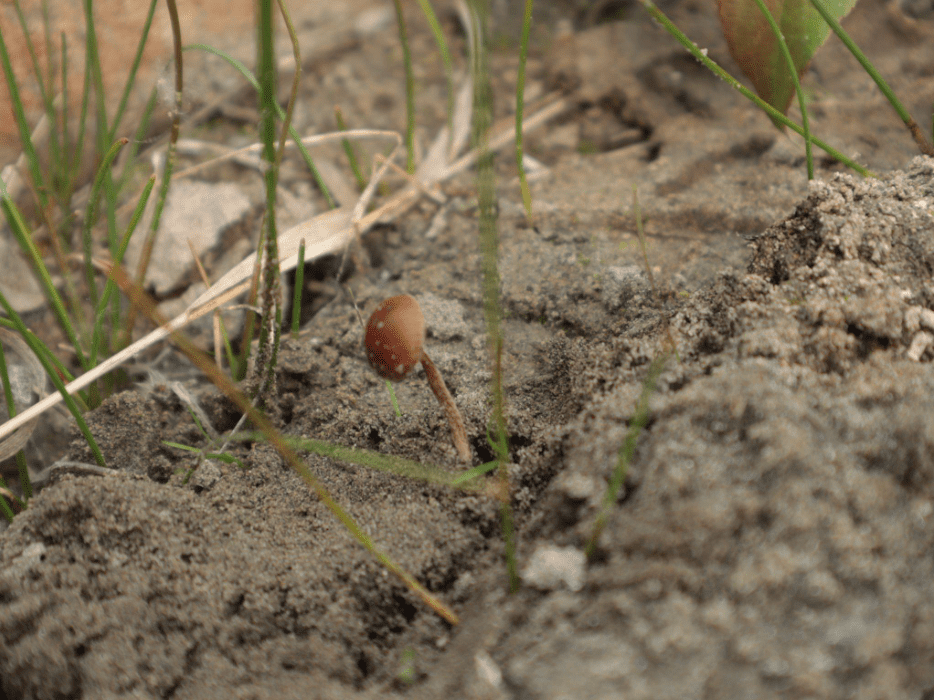I4C X AMS Foray
Date: Saturday/Sunday, May 20/21, 2023
Location: CHANGE Centre, Gainford AB (Sat)/ Mathews Crossing AB (Sun)
Foray Leader(s): Enoki Li, Chris Peet, Josh Key, Cassandra McKenna
Attendees: 16 (Sat) / 7 (Sun)
Weather: Poor weather conditions: wildfire/smoke, hot season, relative drought- for foraging
Terrain: Old farmer’s field with mixed forest in some areas, and others where aspen and poplar forest are dominant
CHANGE Centre, Gainford AB
The CHANGE Centre foray site is located on the Pembina River. It consists of an old farmer’s field with mixed forest in some areas, and others where aspen and poplar forest are dominant. Despite poor weather conditions: wildfire/smoke, hot season, relative drought- for foraging, morels were found on site. 22 morels were found in disturbed soils next to poplar trees, on the southern boundary of foray site.
Other notable fungi found at this site include: various bracket fungi, Pleutus spp., and LBMs. Vegetation of note include, but are not limited to: the yellow marsh marigold, common horsetail, and saskatoon bush. Interesting wildlife observed on the property include the great grey owl, eagles, and frogs. A mycoheterotrophic plant called Ghost pipe was observed on this foray.
After the foray a potluck ensued. Many thanks to guests which contributed to the potluck. At the potluck 5 types of mushrooms were served including: morels, lion’s mane, blue king oyster, pearl oyster, and shiitake mushrooms. The mushroom were seasoned with garlic powder, onion powder, and italian seasoning while frying in unsalted butter. Reishi tea was served as a drink. Unfortunately, the smoke from the wildfires occuded the sky and astronomy events were cancelled, though we will offer the activity again next time.
Matthews Crossing Natural Area, Mathews Crossing AB
Located approx. 16 minutes south west of the CHANGE Centre is the Matthew Crossings Natural Area. The weather conditions were similar to that of the CHANGE centre, however it was noticeably more moist: the trails occasionally showed pooling water and there were marshes intermittent throughout the forest. The is forest mixed, consisting mostly of aspens and poplars, but spruce and birch trees were also very prevalent. The terrain contained many hills.
Aspen oyster, an inky cap, and Pleuteus lutescence were found on this foray, along with various conks (birch conk in particular). We look forward to revisiting this area after some rain. Notable vegatation in the area include ostrich ferns. Young ostrich ferns are called fiddleheads, they are edible and taste somewhat like asparagus or broccoli. Unfortunately, we were not able to pick them on this foray as they have matured past the point of palatability. On this foray there were many signs of animal activity from moose and bears, though none were spotted.
